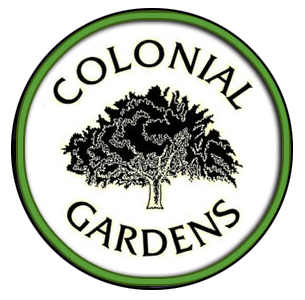
The “inspired garden” series has grown from the idea that garden inspiration can come from anywhere! Just as your sense of style or interior design may be influenced by the aesthetics of a particular location, time period, or vibe, your garden can also be an expression of your particular passions.
Imagine relaxing in the shadow of a tropical oasis–the summer breeze rustling through the jungle of plants around you, hummingbirds zipping by to snag some nectar. While you may envision this oasis in Florida or Hawaii, you can bring the feel of the tropics right here to southeastern Pennsylvania by planting a tropical-inspired garden!
Obviously, the big difference between the tropics and here is the weather, which makes creating a tropical garden more challenging. Every April, we receive a large shipment of tropical plants from Florida to bring instant jungle vibes to your outdoor space. While these plants can make a big impact, there are plenty of hardy plants you can mix into the landscape to create a tropical garden year after year. This blog will be focused on the elements to create a tropical garden with a mix of annuals, tropical plants, and perennials.
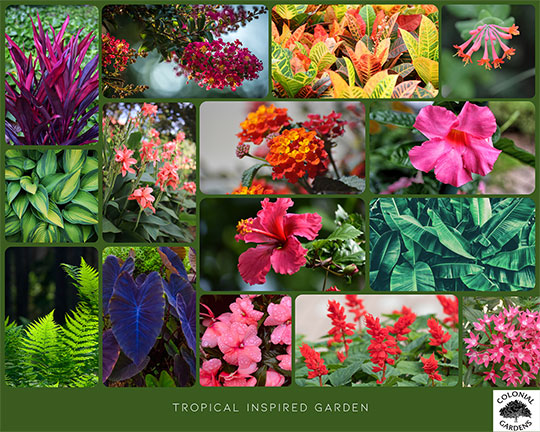
Essential Elements:
The vibe of the tropical garden is bold, big, and bright.
A Focus on Foliage: Because the tropics do not experience winter, plants are in a constant growth stage. The leaves reach incredibly large proportions compared to what they can reach here in PA during our summer. Because of this, you may choose to rely on pre-started tropical plants in combination with perennials in our area that feature larger leaves. Lean into foliage that has dark or bright greens as well as reds and pinks. Avoid cool greens and blues. Vary the textures and colors to differentiate sections and layers.
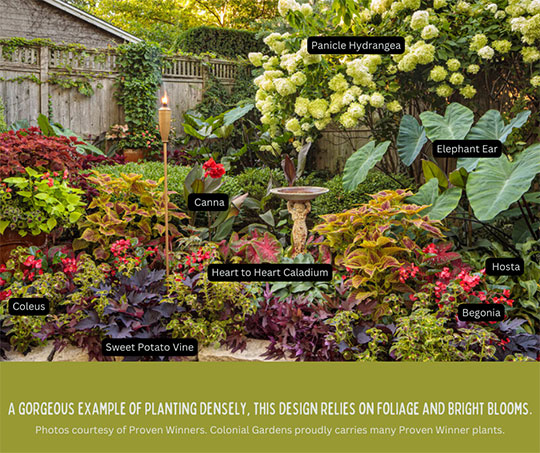
Bold Blooms: The second feature of a tropical garden is warm colors. Evoke the heat of Florida with yellows, oranges, reds, and hot pinks. The great thing about these colors is that they’re wide-spread within our annual house, in both the shade and sun sections. Annuals can help you fill the fronts of your beds and containers with color.
Plants Everywhere: Both of these elements should be combined at all levels of the landscape. Use vines and trellises to gain extra height. Layer beds with a variety of plants, placing low-growing plants up front, with taller foliage in the back. This is not the time to hold back! The goal should be to eat up as much space with life and reduce the areas where you can see mulch, soil, and hardgoods. Spread the tropics to areas of your patio with hanging baskets and planters. The key to creating your tropical jungle vibe is maximalism.
Foliage Plants:
Bananas: Yes, these are the plants that produce delicious clumps of edible bananas, but they are often grown in the garden for their large presence. Bananas grow into trees up to 10 feet tall, although many types will stay smaller in our climate. They sport large green leaves, sometimes with red accents that will give you that lush, larger-than-life vibe.
Elephant Ear: These tropical plants feature oversized, heart-shaped leaves on long stalks. Elephant ears do great in part-shade to full shade areas in the back of the bed or in the center of a planter. There are loads of different varieties of elephant ears so you can choose a vibrant light green or ones that are almost black!
Hostas: For shady gardens, hostas make an excellent investment to evoke the elements of a tropical garden. Unlike a lot of large-leafed options, hostas are perennials and will come back year after year. There are many varieties of hostas, so think about where you want to place them in your space to maximize their foliage. Hostas do best in shady conditions.
Ferns: Ferns thrive in the humidity of tropical areas, colonizing shady spaces. For the best value, you can choose native ferns like ostrich fern, which grow large and lush in our area before going dormant in the winter. Ferns add diversity of texture against the large leaves of bananas and elephant ears. For added interest, you can choose annual options like foxtail ferns, which have columns of finely textured foliage. You can also use ferns in hanging baskets and planters.

Coleus: The ultimate foliage annual, coleus is an excellent option to add color and mass to a bed without relying on blooms. Coleus comes in a wide variety of colors and heights. Coleus is most comfortable in the shade, but some varieties are bred for sun tolerance. Use coleus to break up the blocks of green with zaps of pink and neon.
Houseplants: A great hack for instant foliage? Bring some of your houseplants outside for the summer. Many of these plants originate from the tropics and are ready to fill your porches and patios with lush foliage. Just make sure that you wait until nighttime temperatures are at least in the 50s and choose a spot well suited to your needs. This is a great cost-effective way to bring instant size!

Other Options: Coral bells, Japanese forest grass, Hawaii ti, Sweet potato vine, papyrus, Rex begonia
Flowers
Lantana: Lantanas produce clusters of flowers that look like little fireworks in the colors of the sunset. There are species of lantana that are native to the southern US, so it’s only natural that you incorporate this plant into your tropical garden. While this popular flower is an annual, it is a favorite of hummingbirds and butterflies. Find a spot in full sun with good drainage for lantana or work it into containers.
Salvia: Salvia is an absolute hummingbird magnet! The annual can grow to be 24 to 36 inches tall and wide, giving you a burst of color in your beds. The columns of flowers will provide a nice contrast of texture against some of the larger foliage, waving in the passing breeze. Choose a red, orange, or deep purple color for impact. Use salvia in full sun location either in the middle of your beds or as a centerpiece in planters.
Canna: Cannas are an excellent mix of large foliage and notable warm color blooms. These can be used in a large planter as a centerpiece or place directly in the ground. Canna can have green or bronze foliage with blooms in a variety of warm colors.
Hardy Hibiscus: Hardy hibiscus appear on several of our inspiration lists for good reason: these show-stopping plants produce flowers the size of dinner-plates to add drama to your garden. They are part of the same family as tropical hibiscus, sporting similar shaped flowers. Unlike the tropical hibiscus, they come back year after year. Plant them in the ground and allow them to fill up space in the back of the bed. They love full sun and are tolerant of wet soil.
Coral Honeysuckle: Pennsylvania and Florida both claim Coral Honeysuckle as a native plant! These flowering vines climb to add color and height to your tropical garden. Honeysuckle needs a support structure like a sturdy trellis to thrive. This plant will give you coral-colored blooms up and down its length. This plant is a favorite of hummingbirds and has a long bloom time over summer.
New Guinea Impatiens: These bright flowers with interesting foliage stay small, making them the perfect residents for the front of your garden bed. They are sun-tolerant compared to regular impatiens, but their leaves can burn if they are in full sun conditions.
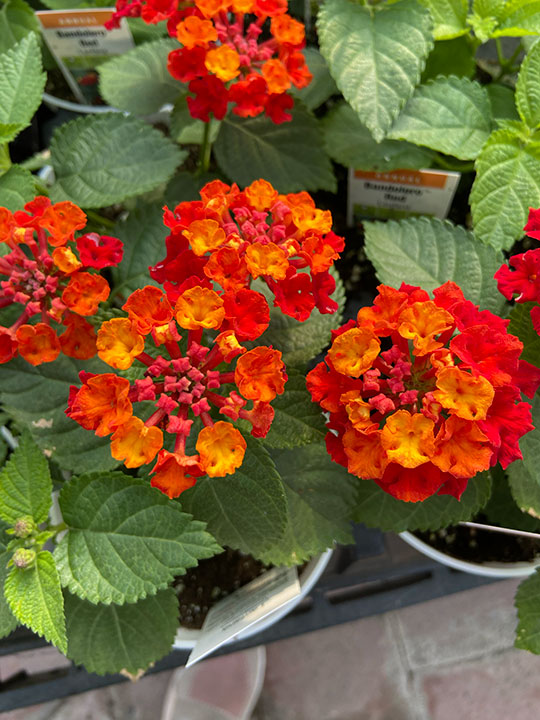
Other Options: Mexican petunia, California Bush Daisy, Pentas, Portulaca, Begonia
Large Statement Plants:
Tropical Hibiscus: There’s nothing quite like a tropical hibiscus. Every bloom looks like it belongs on a postcard. These plants come in bush forms and as small trees, grown on a single trunk or on a braided trunk.
Mandevilla: If you like the idea of a honeysuckle, but you want a bigger flower for impact, consider the mandevilla. In full sun, mandevilla produce flowers all year. These vines create a dense thicket of foliage that can help add shade to a covered porch or height to your planters. Growing in a smaller space? Consider mandevilla’s cousin dipladenia which stays shorter and more compact.
Conclusion:
Don’t forget the accessories! Use vibrant colored pots to brighten up the color palette at the beginning and end of the season. Add tiki torches for a naturalistic light element. Pop a plastic flamingo in your front yard and maybe a margarita in your hand, and bam! You’ve got yourself a tropical garden (in Pennsylvania!).
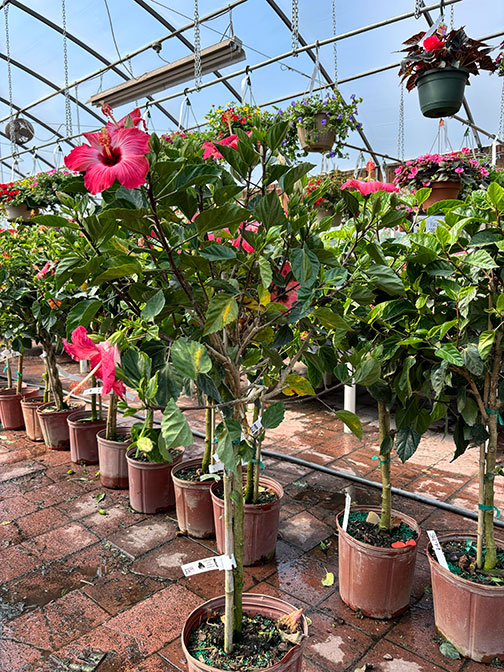
Colonial Gardens is an independent garden center located in Phoenixville in Chester County, Pennsylvania since 1967. We carry one of the widest selection of annuals, perennials, trees and shrubs, and food gardening crops in Southeastern Pennsylvania. We offer professional landscaping services and a full-service florist. Visit our greenhouse for unique houseplants and our gift shop for gifts and garden accessories. In the fall and winter, join us for our family-friendly seasonal events and Christmas shop.
